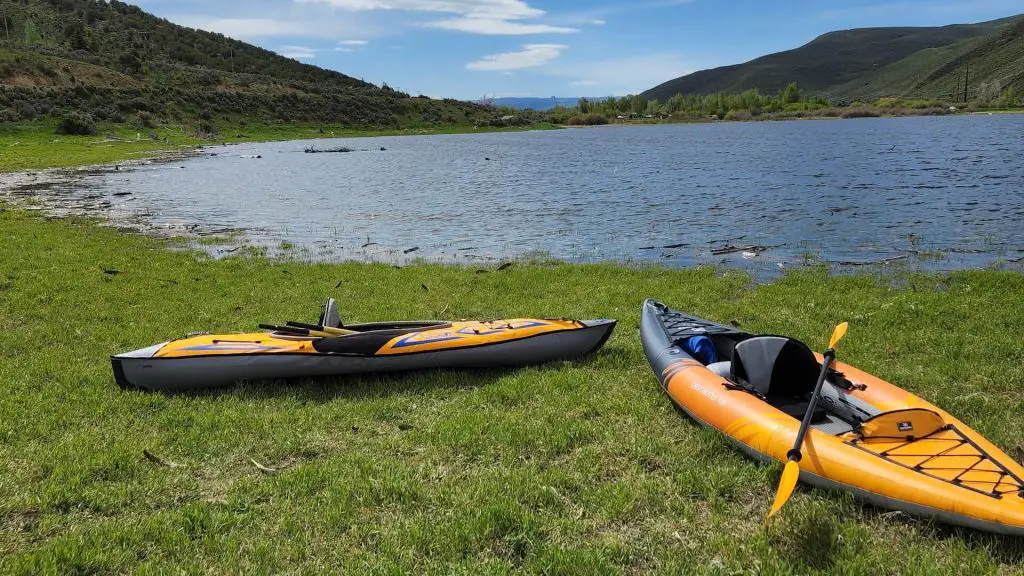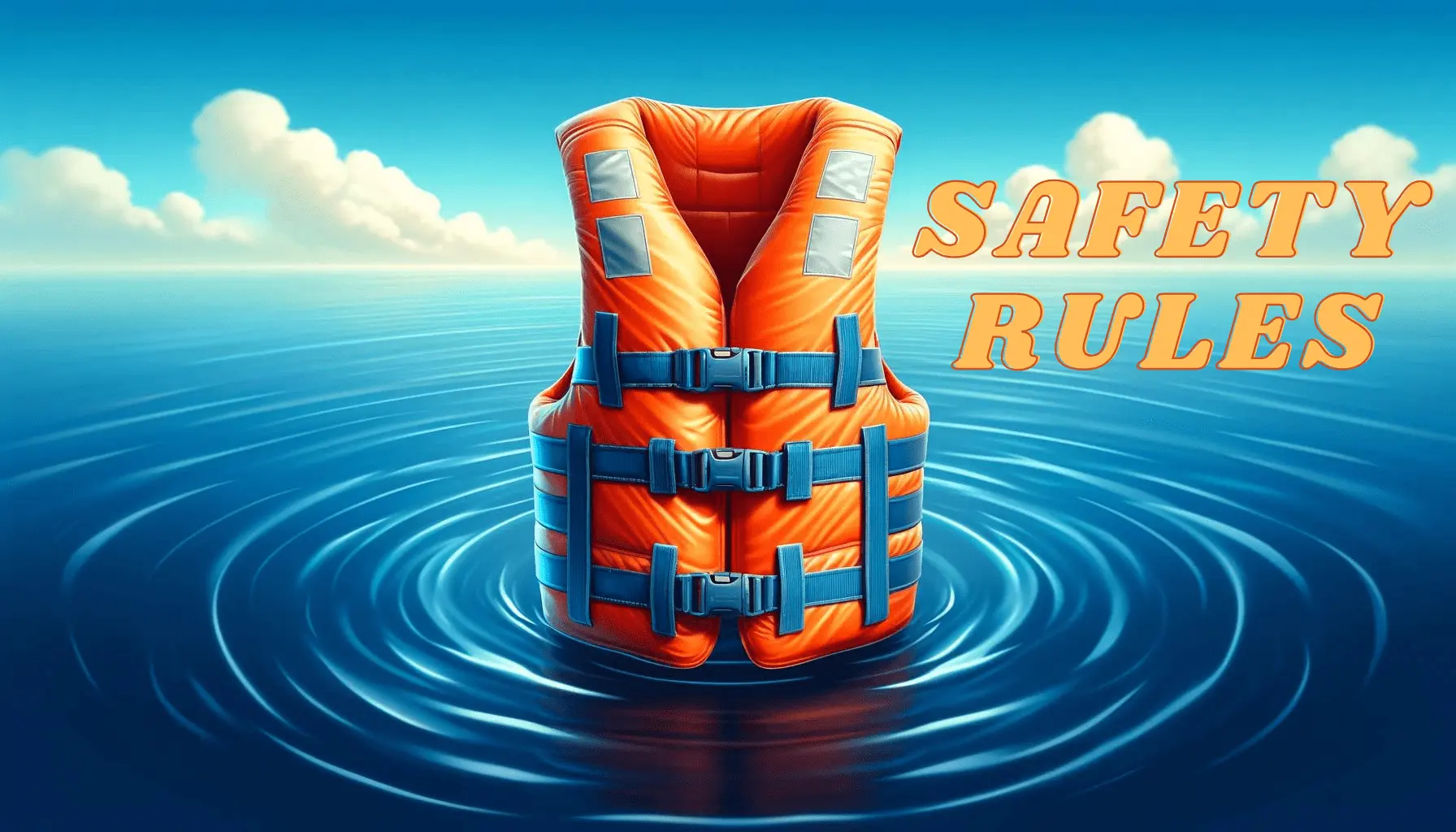While kayaking is a beautiful and enjoyable activity, there is a particular aspect of paddling that is not often discussed.
And the “problem” is, “How much does a kayak weigh?” Why is this aspect of your kayak important? More specifically, why is a kayak’s weight important in choosing a kayak?
We’ll discuss the importance of knowing a kayak’s weight and choosing the lightest one for your adventures.
I will do that by going into more detail about the factors that determine any category of kayak’s weight.
Just to be clear, a kayak’s weight is different from its weight capacity. We will also discuss this. By the end of this article, you will have a better understanding of kayak weight and its impact on your kayaking experience.

Types Of Kayaks And Their Average Weights
A kayak’s weight is an important consideration because it affects speed, maneuverability, stability, portability, and safety.
Understanding the average kayak weight and what variables impact its weight will help you select the appropriate kayak for your goals and ability level.
Each type of kayak weighs differently; the thing to consider when getting the weight of a kayak or, more specifically, comparing kayaks’ weight, is their use.
Your choice of paddling destination, skill level, activities, time of year, and with whom will determine the type of kayaking you want to do.
That, in turn, will narrow down the types of kayaks you should be looking for.
Let’s refresh our memories about the types of kayaks that are used for various kinds of kayaking.
Recreational Kayaks
Recreational kayaks are multipurpose and versatile vessels that are perfect for beginners and are widely available. They weigh between 23 kg and 27 kg, or 50 lbs and 60 lbs, depending on the length and materials used.
Touring Kayaks
Kayakers with plenty of experience paddling on the sea use touring kayaks, which are long and lean boats used for multi-day voyages. They have an average weight of about 24 kg, or 54 lbs.
Whitewater Kayaks
Whitewater kayaks are short, strong, turn on a dime, and have an average weight of about 18 kg or 40 lbs, making them probably the lightest kayak you can own.
Inflatable Kayaks

Inflatable kayaks are extremely versatile and lighter than other materials. On average, inflatable kayaks will weigh between 10 kg and 16 kg, or 23 lbs and 36 lbs, when fully inflated.
Sit On Top Kayaks
Sit-on-top kayaks are predominantly used for fishing and are typically designed to be well-equipped, sturdy, but heavier boats. They weigh between 36 kg and 59 kg, or 80 lbs and 130 lbs, depending on the quality, length, and width.
Factors That Affect Kayak Weight
Each kayak will weigh differently because of its size, length, carrying capacity, and the materials used to build it. Additionally, the accessories and features of a kayak contribute to its weight.
In turn, a kayak’s weight affects its buoyancy, stability, and available space onboard. However, the area where you might feel the most discomfort is when transporting it for use.
Rather than chasing the weight of every single kayak out there, it would be wise to settle on the type of kayaking you want to do.
Choose from the categories above. When you have chosen the type of adventure you want to go on, a series of kayaks will be automatically narrowed down.
Then you can start selecting within your budget to find the best compromise of weight, price, and features that will enhance your kayaking experience.
Typically, shorter kayaks are lighter, so whitewater vessels will be the lightest, and tandem or sit-on-top fishing kayaks will be the heaviest.
Materials Used To Construct The Kayak
The materials used to construct a kayak directly affect its weight as well as its price.
Generally, materials that would make a kayak lighter tend to be more expensive.
Here we will briefly discuss the common materials and manufacturing methods of various kayaks.
Polyethylene
Hard-shell kayak bodies are made of polyethylene or plastic and are strong but hefty. A sea kayak’s average weight is about 24 kg for a 4.5 m or 15 feet boat that is made from PVC or polyethylene.
PVC
PVC is a lightweight material used to make inflatable boats; it is less dense than polyethylene polymers. A typical PVC recreational kayak can weigh about 24 kg, or 53 lbs.
Fiberglass Material And Carbon Fiber

Fiberglass and carbon fiber Kayaks are considerably harder and lighter than any type of plastic. while a carbon fiber boat of 5.1 m, or 17 feet, weighs 21 kg.
Composite Materials
Composite materials can make kayaks harder and lighter, but they are more expensive than typical hardshell vessels, and a composite boat of 4.9 m (16 feet) with either kevlar or fiberglass weighs about 23 kg.
Rotomolded
The rotomolded construction method is used for hardshell kayaks. The process involves melting plastic pellets into the shape of kayaks. The weight of the plastic can make them heavy.
Thermoform
Another manufacturing technique for hard shelled boats is that top and bottom fibers are created separately and molded together to create panels.
There is not much difference in the weight of plastic hardshell kayaks made by using either the rotomolded or thermoformed processes. Again, an average weight for either would be about 24 kg or 53 lbs for 3 – 3.6 m or 10 – 12 feet in length.
Size And Shape Of The Kayak
The size and shape of a kayak directly affect its weight. Longer kayaks are heavier than shorter ones due to their need for more resources to build.
Kayaks with a broader and flatter bottom are more stable, but they can also be heavier.
The most important specs to check are weight capacity, length, hull depth, and size, which can create variance in the weight of kayaks across the same category.
A boat with a bigger weight capacity will naturally have a greater overall weight. That’s because you will want to maximize the capacity by bringing the gear you need.
Although longer boats are more efficient, they also have more storage room for things like overnight or camping supplies.
Again, this can add greater weight to your kayak. Meanwhile, shorter hulls will have less storage as well as use less material, therefore making them lighter.
A vessel’s hull depth can provide more storage space as well, creating the potential for more overall weight. Shallower hulls will therefore be lighter.
Generally, the volume of the hull is a better way to see this spec. A longer hull could have less volume than a shorter hull, while the shorter hull has more depth, and so on.
Accessories And Features Included With The Kayak
The weight of a kayak can be increased by adding accessories and features such as built-in seats, footrests, storage compartments, fishing rod holders, anchor systems, etc.
Other features or accessories that can add more weight to a kayak include skegs, tracking fins, and rudders, which are essential for keeping a boat straight in the wind.
A skeg is a fin that drops down to prevent the vessel from being blown off course by side winds.
A tracking fin’s position cannot be changed, meaning it is permanently in position, at least for the duration of that trip. This system comes with extra fittings and will add to a kayak’s weight.
The same is true for a rudder, which is a fin that allows the kayak to turn as it can be flipped from side to side.
Third-party seats are typically light and provide padding for your back and butt. But DIY seats can add extra bulk when searching for more comfort.
Adding extra bulk is the main purpose of a sit-on-top fishing kayak. Bulkheads in sit-in kayaks like sea or touring kayaks create opportunities to increase their weight when you bring camping gear and supplies.
You need to take these items into account because they are important for the kind of kayaking you may want to do, even though they are optional.
Benefits Of A Lightweight Kayak
The benefits of having a lightweight kayak can’t be overemphasized for these reasons:
transportation, maneuverability, storage, and overall health.
A lighter vessel will be much easier to load, unload, and transport than a heavier one. It performs better on the water, taking less energy to accelerate, spin, roll, or play.
If your kayak is heavy and you have to move it from storage to a vehicle and then take it to the shore to launch, you will feel overwhelmed and possibly be at risk of injury.
A lighter vessel will make transportation more manageable. Additionally, storage can be easier, regardless of the storage system you have in place.
Health-wise, you shouldn’t feel like you are working out because of the weight of your kayak.
Finally, when you are paddling in the water, you will want a vessel that is well balanced and is carrying as little unnecessary weight as possible.
A light kayak can allow you to avoid the pain points, which can make accessing adventures easier mentally. This will have a positive impact on your overall well being.
If your kayak becomes too heavy over time or from the get go, you can build a kayak cart to help you transport it between storage and your vehicle and between the vehicle and the shore to launch into the water.
Comparison Of Kayak Weight With Other Watercraft
Let’s discuss the weights of other watercraft, such as canoe and SUP weights, and how they compare to kayak weights.
Canoes have a long tradition among Continental American aboriginals, just like kayaks. And similar to the history of the kayak, it has undergone modernization in design and construction.
On the other hand, stand up paddle boarding involves standing up on a board and paddling through the water.
Kayaks Vs Canoes

In general, kayaks are cheaper, and they are often lighter than canoes and hence easier to transport. The efficient design of kayaks makes them faster than canoes.
They can be easier to paddle than canoes due to their sleeker shape and lower position in the water.
Additionally, canoes need more than one paddler, while kayak paddlers can successfully paddle solo. The sleeker design enables kayaks to be more maneuverable in the water, especially shorter recreational and whitewater kayaks.
Canoes, especially the multi-person ones, are bigger and heavier, which makes transportation more challenging.
On average, kayaks can weigh anywhere from 30 pounds (15 kg) to 67 pounds (30 kg). At the same time, a canoe can weigh 50 (22 kg) pounds and go up to 110 (50 kg).
Kayaks can be tuned to provide more comfort in your sitting position. You can have better back and lumbar support than canoe benches.
However, canoes are more stable in the water than kayaks due to their wider design.
As mentioned, canoes have a higher weight capacity than kayaks due to their larger size.
Due to the canoe’s open deck, entering and exiting are much easier than in a kayak. Even sit-on-tops don’t have as much stability as a canoe’s.
Kayaks Vs Standup Paddleboards

SUPs and kayaks have models in the following categories of design types available, from racing, touring, recreation, fishing, and surf models.
The average weight of the kayak is between 30 pounds (15 kg) to 67 pounds (30 kg), as has been said before. And the average weight of a SUP is around 24 pounds (10 kg) or 30 pounds ( 14 kg).
The major difference between the two is the paddling technique. As the name suggests, paddleboarders stand up on the board to propel themselves with a single blade paddle.
Kayak paddlers use a double-bladed paddle and sit either in an enclosed cockpit or on the open deck.
SUPs are suited for fitness buffs because you can get a more rigorous full-body workout paddling all day.
Kayaks are better for relaxed trips as you sit in or on them, while SUPs are easier to learn.
However, it is possible to get a great workout with a kayak in choppy waters and whitewater. Again, SUPs are best for warm days, while kayaks can handle hot, cool, or cold days.
Although you can do most of the same activities with a SUP or a kayak. They cater to different lifestyles and have advantages over each other. However, the kayak is more versatile because of the protection it offers.
The things to consider when deciding between a kayak, a canoe, or a paddleboard are your budget, transporting your vessel, weight, what type of adventures you like, and if you paddle solo or with a partner.
Summary
Kayaks’ weights are often overlooked when it comes to choosing a vessel for kayaking adventures.
We tend to make the budget the determining factor in selecting a kayak, but we now need to look at kayak weight to have a complete picture of how to get the best kayaking experience.
A kayak’s weight determines its maneuverability in the water and its weight capacity. Also, a kayak’s weight affects its portability in terms of both use and storage.
So, if you are considering buying your first kayak, you will do well to avoid the mistake that so many paddlers before you have made, which is to overlook the weight of the kayak.
And if you are a seasoned paddler and in the market for a new kayak, you now know to seriously consider the lightest possible kayak in the category of paddling you aim for.
You can even compare the experience of kayaking to other water vessels like canoes or paddleboards to fine tune your decision about the best vessel to get for the next stage of your adventures.



